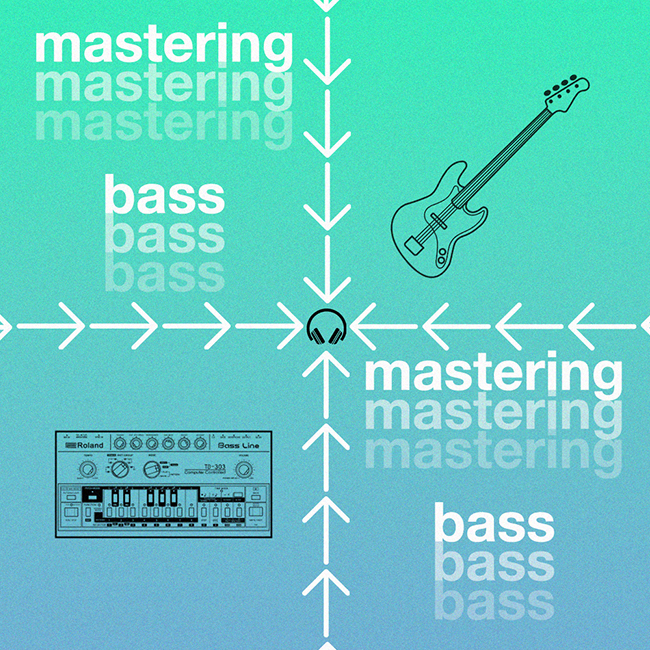Almost any level of producer is likely to agree that getting the bass in a mix spot on can be a difficult process at times. There’s one main reason for this. They’re the hardest frequencies to hear and the ones we like the most, so they need to be the loudest ones in the mix, which can cause all sorts of problems if not done right!
To learn more about Bass processing, and lots more, sign up for a free trial of the membership now.
Got enough Sub?
One way to make sure you’re in the right vicinity is to the a look at the frequencies in your mix on an analyser. If you’re not seeing a decent enough level from 50-100Hz, then you’ll be needing to add things like sub kick layers or basslines, depending on the genre you’re producing.

Sufficiently bolstering the bottom end will make the mix sound fatter and satisfyingly bassy but can make the track muddier, especially when the balance between sub and bass frequencies aren’t right. Also, as low frequencies mask high ones, there’ll need to be some compensation at the top end. These issues can often be improved significantly with EQ.
Bass Saturation
One of the standard effects you often see on a bass track is something that fattens up the bass frequencies in the sound, with Wave’s MaxxBass being a popular effect for achieving this. Similar effects are possible using a saturator though, which is a stock effect that comes with most DAWs. This is particularly effective when used in parallel, for example on a return or auxiliary track, or in Ableton Live using a rack.
Last month, we provided our members with a 6-band saturation rack for Ableton Live, perfect for processing bass sounds, but equally great for plenty of other sounds too. Whether you want to beef up the sub content, fill out the lows or provide some crunch in the mids or highs, this rack delivers!

Cleaning up Noisy Bass
In genres like Bass Music particularly, bass patches can often be seriously raucous, with large amounts of frequency content in the mids and highs. Frequency-shaping of some kind is a good idea on these sorts of sounds, to help clean up the mix whilst also adding extra interest, movement and variation in the bass.
Filters are very useful for this, whether it’s simple low-pass ones or modulating notches. For a similar but more complex outcome though, phasers can be an excellent effect to try. They allow you to carve out a selectable number of bands from the desired frequency range, with the bands’ motion

Phaser is just one of the effects you can find in yet another rack we’ve made for members recently using purely stock Ableton effects. The rack is capable of turning even the simplest sounds into massive bass monsters!
More Bass Processing Member Content
As bass is such a huge and complex topic, we’ve dedicated the last few months to it, with a constant stream of weekly bonus content for our members, in the form of presets, samples, tutorials and livestreams. This week we have the next instalment from the Producertech tutor roster, with a livestream from Bass Music don Seppa!

To join, sign up for a free trial of the membership now.

